Why do sounds drop out when using Boss Dr. Rhythm DR-3 DR-3?
- KKelly McfarlandAug 13, 2025
Sounds may drop out on your Boss Drums DR-3 if you are playing too many sounds simultaneously. The DR-3 has a maximum polyphony of 12 sounds.
Why do sounds drop out when using Boss Dr. Rhythm DR-3 DR-3?
Sounds may drop out on your Boss Drums DR-3 if you are playing too many sounds simultaneously. The DR-3 has a maximum polyphony of 12 sounds.
What to do if there is no sound from Boss Drums?
If you are experiencing no sound from your Boss Drums, check the following: * Ensure the volume is not turned down. * Verify the Output is set to “DRUM” or “BASS”. * Confirm the instrument’s level is not set to “0”. * Make sure you have selected a style, pattern, or song containing performance data.
Why can't I change settings (Kits, Styles, TSC) on my Boss Drums?
If you cannot change the settings on your Boss Drums, consider the following: * Ensure you have selected a User setting, as Preset settings cannot be altered. User settings have a “U” appended to their number. * If a performance is in progress, certain data cannot be changed. Stop the performance first, and then make the changes.
What to do if the foot switch does not work with Boss Drums?
If the foot switch is not working with your Boss Drums, make sure the foot switch is properly connected. Also, during recording or editing, depressing the foot switch will have no effect.
How to fix Boss Dr. Rhythm DR-3 Drums DR-3 not playing with external MIDI device?
If your Boss Drums DR-3 is not playing with an external MIDI device, ensure the MIDI channel settings are correct and the note numbers are correct. Also, some MIDI messages cannot be received while editing is in progress, so exit Edit mode by pressing the [EXIT] button.
Why does performance not start when START is pressed on Boss Dr. Rhythm DR-3 Drums?
Performance may not start on your Boss Drums if you have selected a style, pattern or song containing no performance data.
Why does the button not flash when STEP REC is pressed on Boss Dr. Rhythm DR-3 Drums?
If the button does not flash when STEP REC is pressed on your Boss Drums, ensure you have selected User Styles, which have a “U” appended to their number. Also, make sure you have exited Edit mode by pressing the [EXIT] button.
What to do if there is no metronome sound when Realtime Recording is used on Boss Drums?
If there is no metronome sound when Realtime Recording is used on your Boss Drums, ensure the metronome level (Click Level) is not set to “0”.
Information on using batteries, including recommendations and precautions.
Guidelines for properly positioning the unit to ensure optimal performance and safety.
Further safety and operational advice beyond standard warnings.
Creating custom rhythm patterns using drum and bass sounds and fill-ins.
Adjusting overall tone and acoustic characteristics with Sound Shape and Ambience.
Automatic pattern switching for jam sessions, allowing hands-free operation.
Pads respond to touch dynamics, allowing volume changes based on playing force.
Instructions for activating and listening to the unit's built-in demo performance.
Guidance on performing with rhythm styles in Manual mode.
Procedure for choosing from the DR-3's 100 pre-programmed rhythm styles.
Instructions for connecting an optional foot switch to the DR-3.
How to use the foot switch for starting, stopping, and switching patterns.
Explains the different modes available for performing with the DR-3.
Details on performing using pre-programmed or user-created rhythm styles.
Explains the structure of a style, including patterns, kits, and variations.
Description and layout of the controls and display on the front of the unit.
Overview of the connectors and switches located on the rear of the DR-3.
Step-by-step guide for installing batteries into the unit.
Instructions for connecting the DR-3 to amplifiers, headphones, and other devices.
Procedure for safely powering the unit on and off, including connection order.
Explanation of how the DR-3 pads function in Manual mode for pattern switching.
Procedure for selecting styles to be performed in Manual mode.
How patterns are divided into eight performance units and assigned to pads.
Procedure for selecting styles to be performed in Auto mode.
How to perform with patterns switching automatically in Auto mode.
Customizing the sequence and length of patterns played in Auto mode.
Using foot switches to start, stop, and pause performances of styles and songs.
Using foot switches to insert fill-ins and switch to the next verse in a style.
Customizing functions assigned to foot switches beyond basic start/stop.
Adjusting the sound's overall tone using the 3-band equalizer and compressor.
Modifying the sound's acoustic characteristics using ambience effects.
Detailed settings for Sound Shape's equalizer parameters.
Instructions for playing drum sounds using the pads.
Instructions for playing percussion sounds using the pads.
Instructions for playing bass sounds using the pads.
Switching between the two drum kits included with each style.
Step-by-step guide for creating new user styles.
Choosing a unique number for a new user style.
Setting tempo, beat, kit, mute, TSC, and pattern measure settings for a new style.
Recording patterns using real-time or step recording methods.
Definition of a song as an arrangement of patterns and its storage capacity.
Step-by-step guide for creating new songs on the DR-3.
Setting initial tempo, TSC, and other parameters for a new song.
Inserting, deleting, copying, and tempo-changing segments within recorded songs.
Procedure for accessing and changing system settings like pad sensitivity and MIDI.
Adjusting pad sensitivity for nuanced or strong accent performance.
Procedure for editing user kits, including instrument assignments and sound playback.
Choosing instruments to assign to the pads for drum and bass sounds.
Editing the name of a selected kit using up to eight characters.
Explanation of MIDI and its role in connecting electronic musical instruments.
Assigning MIDI channels for drum and bass parts to ensure proper data reception.
Determining if the DR-3 acts as a slave device for MIDI synchronization.
Recording MIDI keyboard or pad performances into DR-3 patterns in real time.
Solutions to common operational problems and issues encountered with the DR-3.
List of system messages, their causes, and recommended actions.
Comprehensive list of all adjustable parameters and their values.
Information on using batteries, including recommendations and precautions.
Guidelines for properly positioning the unit to ensure optimal performance and safety.
Further safety and operational advice beyond standard warnings.
Creating custom rhythm patterns using drum and bass sounds and fill-ins.
Adjusting overall tone and acoustic characteristics with Sound Shape and Ambience.
Automatic pattern switching for jam sessions, allowing hands-free operation.
Pads respond to touch dynamics, allowing volume changes based on playing force.
Instructions for activating and listening to the unit's built-in demo performance.
Guidance on performing with rhythm styles in Manual mode.
Procedure for choosing from the DR-3's 100 pre-programmed rhythm styles.
Instructions for connecting an optional foot switch to the DR-3.
How to use the foot switch for starting, stopping, and switching patterns.
Explains the different modes available for performing with the DR-3.
Details on performing using pre-programmed or user-created rhythm styles.
Explains the structure of a style, including patterns, kits, and variations.
Description and layout of the controls and display on the front of the unit.
Overview of the connectors and switches located on the rear of the DR-3.
Step-by-step guide for installing batteries into the unit.
Instructions for connecting the DR-3 to amplifiers, headphones, and other devices.
Procedure for safely powering the unit on and off, including connection order.
Explanation of how the DR-3 pads function in Manual mode for pattern switching.
Procedure for selecting styles to be performed in Manual mode.
How patterns are divided into eight performance units and assigned to pads.
Procedure for selecting styles to be performed in Auto mode.
How to perform with patterns switching automatically in Auto mode.
Customizing the sequence and length of patterns played in Auto mode.
Using foot switches to start, stop, and pause performances of styles and songs.
Using foot switches to insert fill-ins and switch to the next verse in a style.
Customizing functions assigned to foot switches beyond basic start/stop.
Adjusting the sound's overall tone using the 3-band equalizer and compressor.
Modifying the sound's acoustic characteristics using ambience effects.
Detailed settings for Sound Shape's equalizer parameters.
Instructions for playing drum sounds using the pads.
Instructions for playing percussion sounds using the pads.
Instructions for playing bass sounds using the pads.
Switching between the two drum kits included with each style.
Step-by-step guide for creating new user styles.
Choosing a unique number for a new user style.
Setting tempo, beat, kit, mute, TSC, and pattern measure settings for a new style.
Recording patterns using real-time or step recording methods.
Definition of a song as an arrangement of patterns and its storage capacity.
Step-by-step guide for creating new songs on the DR-3.
Setting initial tempo, TSC, and other parameters for a new song.
Inserting, deleting, copying, and tempo-changing segments within recorded songs.
Procedure for accessing and changing system settings like pad sensitivity and MIDI.
Adjusting pad sensitivity for nuanced or strong accent performance.
Procedure for editing user kits, including instrument assignments and sound playback.
Choosing instruments to assign to the pads for drum and bass sounds.
Editing the name of a selected kit using up to eight characters.
Explanation of MIDI and its role in connecting electronic musical instruments.
Assigning MIDI channels for drum and bass parts to ensure proper data reception.
Determining if the DR-3 acts as a slave device for MIDI synchronization.
Recording MIDI keyboard or pad performances into DR-3 patterns in real time.
Solutions to common operational problems and issues encountered with the DR-3.
List of system messages, their causes, and recommended actions.
Comprehensive list of all adjustable parameters and their values.
| Type | Drum Machine |
|---|---|
| Drum Kits | 50 |
| Patterns | 100 |
| Presets | 50 |
| Display | LCD |
| Effects | Delay |
| Connectivity | MIDI In/Out |
| Power | 9V DC |
| Power Supply | AC Adaptor (included) or 6 x AA batteries |
| MIDI | In/Out |
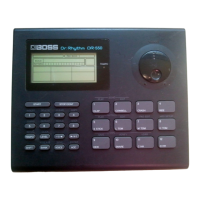
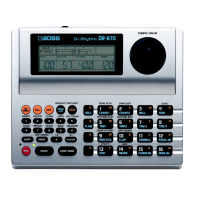
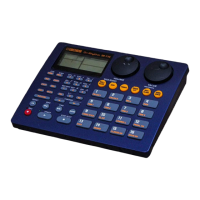
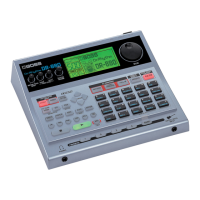
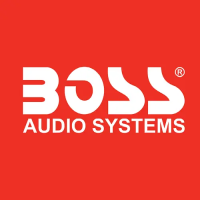
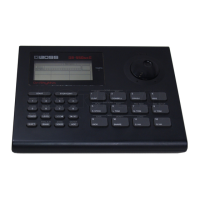
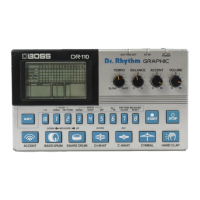
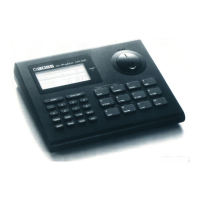
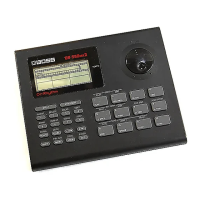
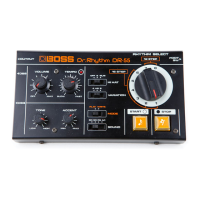
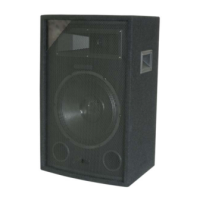
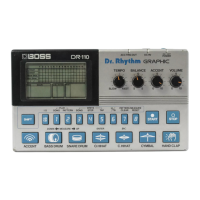
